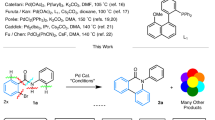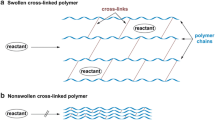Summary
The end function of polyethylene glycol was transferred to the tertiary alcohol for use as acid labile, solubilizing protecting group in peptide synthesis.
Similar content being viewed by others
References
Anzinger, H., Bayer, E. and Mutter, M.: Angew. Chem. 91, 747 (1979)
Bückmann, A.F., Morr, M. and Johansson, G.: Makromol. Chem. 182. 1379 (1980)
Mutter, M., Bayer, E.: in The Peptides: Analysis, Synthesis and Biology (eds.) Gross, E., Meienhofer, J. p 285, New York, Academic Press 1979
Pillai, V.N.R. and Mutter, M.: Naturwissenschaften 68, 558 (1981)
Pillai, V.N.R., Mutter, M., Bayer, E. and Gatfield, I.: J. Org. Chem. 45, 5364 (1980)
Author information
Authors and Affiliations
Additional information
For communication 2 in this series see: Mutter, M., Tetrahedron Letters, 2843 (1978)
Rights and permissions
About this article
Cite this article
Anzinger, H., Mutter, M. Soluble polymers in organic synthesis. Polymer Bulletin 6, 595–601 (1982). https://doi.org/10.1007/BF00255161
Received:
Accepted:
Issue Date:
DOI: https://doi.org/10.1007/BF00255161




